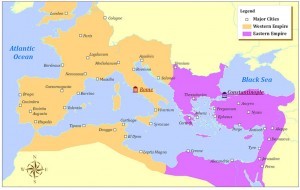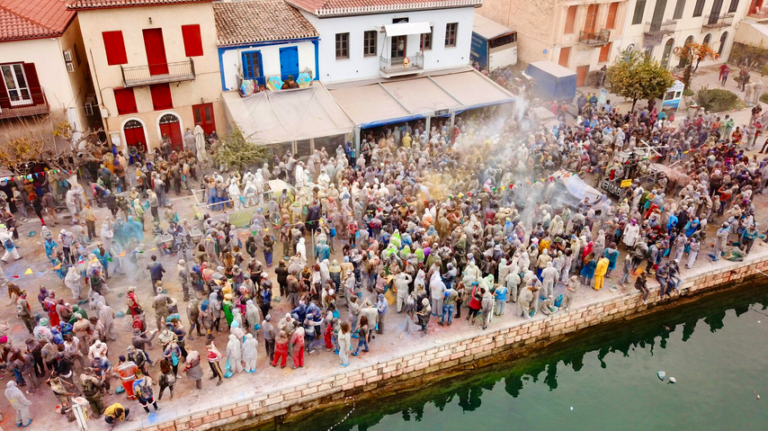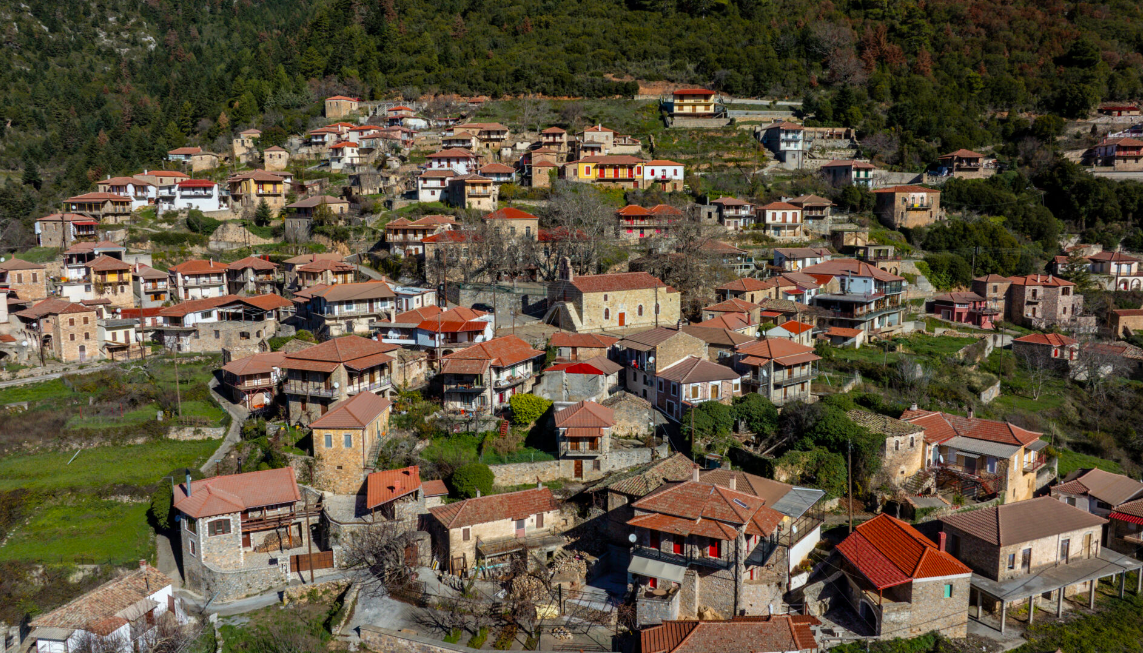The Byzantine Empire’s influence can be found throughout Greece. For instance, Churches from the days of the Byzantine Empire can be found throughout Greece and the style of music sung inside these churches also hails from the Byzantine tradition. During this time, the Greeks actually referred to themselves as Romans, since the Byzantine Empire was considered to be the “Eastern Roman Empire”. Here’s more information about this part of Greece’s history:
The Roman Empire Off to a Turbulent Start in Greece
Different parts of Greece became part of the Byzantine Empire during different times. Parts of mainland Greece became part of the Byzantine Empire in 146 B.C. The Greek islands in the Aegean Sea were added to the Byzantine Empire in 133 B.C. It wasn’t exactly a peaceful time, and in 88 B.C., the people of Athens revolted against the Byzantine influence. This revolg never amounted to anything and the Roman general, Sulla, crushed the uprising. The Roman Civil Wars that occurred after the uprising further destroyed the lands. Finally, in 27 B.C., Emporer Augustus organized the area to become part of the Achaea province of Rome.
Augustus Becomes the First Roman Emporer
Augustus is recognized as the first Roman Emperor. He became the head of the Roman Empire from 27 B.C. until his death in 14 B.C. As mentioned above, he played a part in Greece by absorbing the country into Achaea, a well-known Roman province. It is important to point out that during this period of time during the Roman Empire, it wasn’t considered the Byzantine Empire. Although the Byzantine Empire was technically considered the Eastern Roman Empire once it was established, this didn’t come until much later. The Byzantine Empire was established in 330 B.C.
Greece Was an Eastern Province of the Roman Empire
Greece was considered to be an Eastern Province of the Roman Empire, but as mentioned above, this Byzantine Empire was established until long after the Romans originally came to Greece when the Roman Empire would become divided into the Eastern Roman Empire (Byzantine) and the Western Roman Empire (Rome). After that,, Romans flocked here in order to set up colonies. When they did so, they brought with them elements of the Roman Empire, and these slowly began to influence the life and the people of Greece. The Roman Empire was known for its inventions, innovations, and intellectual pursuits. Eventually, when the Roman Empire made the switch to Christianity, they brought this into Greece, as well. They also added new buildings to existing cities, such as Athens, and they built the Agora in Athens, the Tower of the Wind, and the Library of Titus Flavius Pantaenus.
Constantinople Was Created as the Head of the Byzantine Empire
(The monastery of Panayia Pantanassa at the historical site of Mystras, a Byzantine castle in Greece. The monastery is the sole inhabited temple on the site since the Byzantium era. Only women live there)
As the Roman Empire grew in size, rulers felt as if it was too large in order to be ruled effectively from Rome. So, the empire was devided into the Eastern Roman Empire, also referred to as the Byzantine Empire, and the Western Roman Empire, which was headed up in Rome. Constantinople became the head of the Eastern Roman Empire, and Greece fell under this control. Constantinople was intended to be a Christian capital, and it was during this time when Christianity officially came to Greece.
The Byzantine Empire came about a few hundred years after the Romans came to Greece. After Constantinople was founded, Greece became part of the Eastern Roman Empire. The Byzantine Empire was technically in existence from 330 A.D. to around 1453 A.D with the Fall of Constantinople.
Ask me anything
Explore related questions







